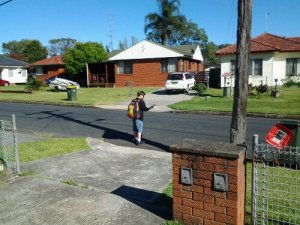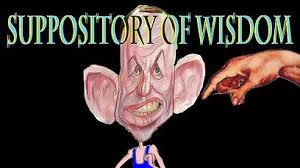 Image source: SMH
Image source: SMH
In the 2013 Australian Federal election we witnessed how poorly migrants are represented within the media, especially Asylum Seekers. Since 1945 an estimated 6.6 million people (Salazar 2012 p.2) have migrated to Australia with only 10 percent being refugees. These migrants often face many battles; racism, language and cultural obstacles, health issues and struggling with the feeling of displacement and loss (Salazar 2012 p.3). Consequently these individuals can often be a vulnerable group within our society and with media representing stereotypes, moral panics and politician’s degrading these individuals, how can they feel a sense of belonging?
A main campaign area for the last Federal election was Asylum Seekers. Within this debate we were subjected to the Liberals media propaganda declaring to ‘stop the boats’ and presented with weekly statistics of the number of ‘illegal Asylum Seeker’s’ attempting to seek refuge on our shores. The media neglected to note that seeking Asylum is not illegal but is a fundamental human right to request asylum under international law.
The mass media also framed our boat arrival numbers to be that of an extreme influx when The Asylum Seeker Resource Centre (2013) puts Australia as 49th in the world for the total number of Refugees and compared to our GDP we are ranked 87th (The Asylum Seeker Resource Centre 2013). In regards to Asylum seekers the resource centre places Australia at 20th in the world and 52nd compared to our GDP (The Asylum Seeker Resource Centre 2013). Therefore in comparison we are not being “Swamped” by refugees/Asylum Seekers as we are not even in the top 10 nations within the world to receive these migrants.
Representations through the media will not cease until our politicians accurately address these communities within the media. Liberal Member of Parliament Fiona Scott during the election campaign placed blame on Asylum Seekers for traffic on the M4 and for long queues at local hospitals (Blake 2013). Yet as stated earlier Salazar (2013 p.2) only found that 10 percentage of all migration were Asylum Seekers/ Refugees, hardly an amount of individuals that could cause such disruption as Fiona Scott is trying to state.
Politicians and the media need to take a diasporic view and help to familiarise these migrants into their host country without intimidation. Rather than promoting stereotypes and neglecting facts within reports framing these individuals to be illegal and essentially disrupting the Australian way of life
References:
Asylum Seeker Resource Centre 2013, Australia vs. the world, viewed 22nd May 2014, < http://www.asrc.org.au/wp-content/uploads/2013/07/australia-vs-rest-world-refugees-asylum-seekers___.pdf >
Blake, S 2013, ‘Liberal Fiona Scott links asylum seekers to Sydney traffic problems’, News.com.au, 3rd September, viewed 22nd May 2014, < http://www.news.com.au/national/liberal-fiona-scott-links-asylum-seekers-to-sydney-traffic-problems/story-fnho52ip-1226709650526 >
Salazar, J 2012, ‘Digital Stories and emerging citizens media practices by migrant youth in Western Sydney, Journal of Community, Citizen’s and Third Sector Media and Communication, no. 7.





